Mapping Of Galactic Bar In The Milky Way By Gaia
Eddie Gonzales Jr. – MessageToEagle.com – Researchers created a map of the bar-shaped collection of stars at the center of our Milky Way galaxy, by combining ESA’s Gaia mission’s second data release (DR2) with complementary observations by ground- and space-based telescopes, the catalog
The unprecedented catalog contains the brightness, positions, distance indicators and motions across the sky for more than one billion stars in our Milky Way galaxy, along with information about other celestial bodies.
 Display of Gaia data combined with other surveys and StarHorse code over an illustration of the Milky Way. A bar structure is clearly visible in the middle. Credit: NASA/JPL-Caltech/R. Hurt; Starhorse Overlay: A. Khalatyan
Display of Gaia data combined with other surveys and StarHorse code over an illustration of the Milky Way. A bar structure is clearly visible in the middle. Credit: NASA/JPL-Caltech/R. Hurt; Starhorse Overlay: A. Khalatyan
“We looked in particular at two of the stellar parameters contained in the Gaia data: the surface temperature of stars and the ‘extinction’, which is basically a measure of how much dust there is between us and the stars, obscuring their light and making it appear redder,” Friedrich Anders ICCUB member and lead author of the new study, conducted by researchers from the Institute of Science Cosmos of the University of Barcelona and from the Leibniz Institute for Astrophysics Potsdam (Germany), said in a press release.
“These two parameters are interconnected, but we can estimate them independently by adding extra information obtained by peering through the dust with infrared observations.”
“With the second Gaia data release, we could probe a radius around the Sun of about 6500 light years, but with our new catalogue, we can extend this ‘Gaia sphere’ by three or four times, reaching out to the centre of the Milky Way,” explains co-author Cristina Chiappini from Leibniz Institute for Astrophysics Potsdam, Germany, where the project was coordinated.
At the center of our galaxy, the data clearly reveals a large, elongated feature in the three-dimensional distribution of stars: the galactic bar.
“We know the Milky Way has a bar, like other barred spiral galaxies, but so far we only had indirect indications from the motions of stars and gas, or from star counts in infrared surveys. This is the first time that we see the galactic bar in three-dimensional space, based on geometric measurements of stellar distances,” says Friedrich Anders.
“Ultimately, we are interested in galactic archaeology: we want to reconstruct how the Milky Way formed and evolved, and to do so we have to understand the history of each and every one of its components,” adds Cristina Chiappini.
Written by Eddie Gonzales Jr. – MessageToEagle.com Staff
Related Posts
-
 Einstein’s Theory Of Gravity Holds – Even In Extreme Conditions
No Comments | Jul 5, 2018
Einstein’s Theory Of Gravity Holds – Even In Extreme Conditions
No Comments | Jul 5, 2018 -
 At Least 70% Of Martian Lakes Have Yet To Be Discovered – Researchers Say
No Comments | Sep 18, 2022
At Least 70% Of Martian Lakes Have Yet To Be Discovered – Researchers Say
No Comments | Sep 18, 2022 -
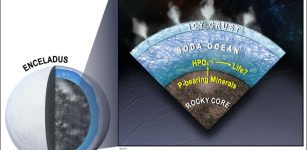 Focusing On New Evidence For Habitability In Ocean Of Saturn’s Moon Enceladus
No Comments | Sep 19, 2022
Focusing On New Evidence For Habitability In Ocean Of Saturn’s Moon Enceladus
No Comments | Sep 19, 2022 -
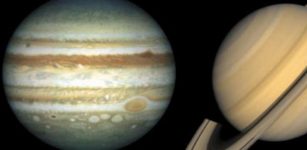 Elusive Giant Planets And Meteor Magnets In Outer Space – New Study
No Comments | May 26, 2019
Elusive Giant Planets And Meteor Magnets In Outer Space – New Study
No Comments | May 26, 2019 -
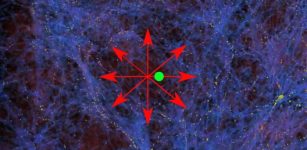 Hubble Tension: A New Possible Explanation For An Intriguing Problem In Cosmology
No Comments | Dec 3, 2023
Hubble Tension: A New Possible Explanation For An Intriguing Problem In Cosmology
No Comments | Dec 3, 2023 -
 Mystery Of Jupiter’s Incredible Journey To Our Solar System Revealed
No Comments | Mar 28, 2019
Mystery Of Jupiter’s Incredible Journey To Our Solar System Revealed
No Comments | Mar 28, 2019 -
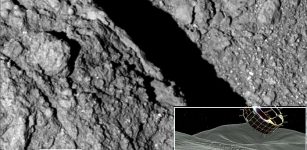 Japanese Jumping Robotic Rovers Deliver Amazing Images From Surface Of Asteroid Ryugu
No Comments | Sep 28, 2018
Japanese Jumping Robotic Rovers Deliver Amazing Images From Surface Of Asteroid Ryugu
No Comments | Sep 28, 2018 -
 Unknown Dwarf Galaxy Crashed Into Milky Way Around 8 Billion Years Ago
No Comments | Jul 8, 2018
Unknown Dwarf Galaxy Crashed Into Milky Way Around 8 Billion Years Ago
No Comments | Jul 8, 2018 -
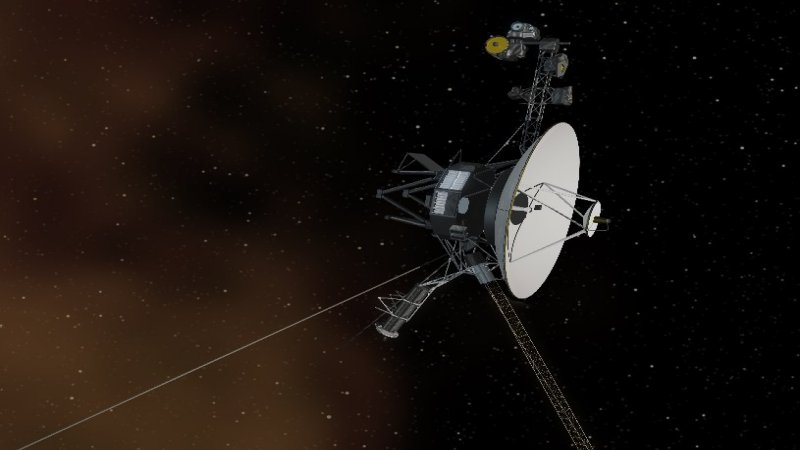 Voyager 1 and 2 Still Make New Discoveries – New Type Of Solar Electron Burst – Detected
No Comments | Dec 3, 2020
Voyager 1 and 2 Still Make New Discoveries – New Type Of Solar Electron Burst – Detected
No Comments | Dec 3, 2020 -
 10 Great Space Images: Quizz: How Well Do You Know Your Space Photos?
No Comments | Nov 26, 2015
10 Great Space Images: Quizz: How Well Do You Know Your Space Photos?
No Comments | Nov 26, 2015
